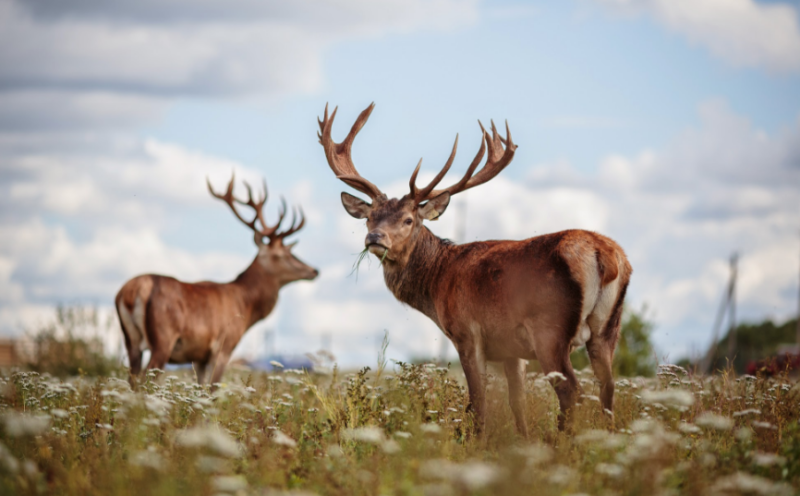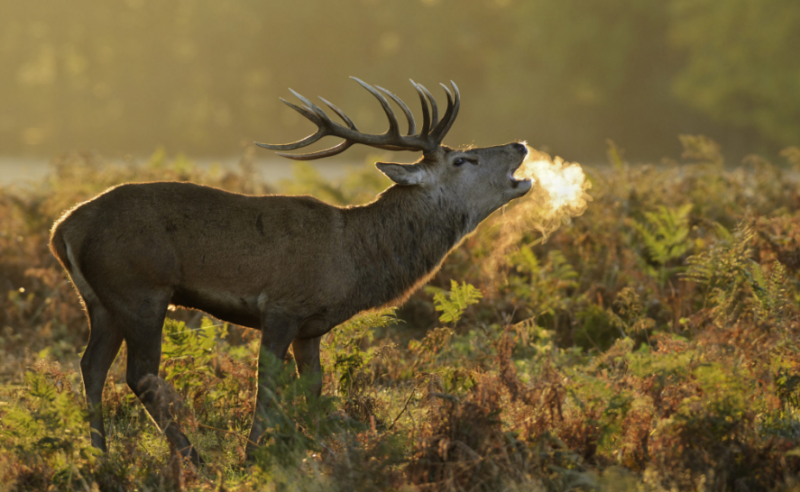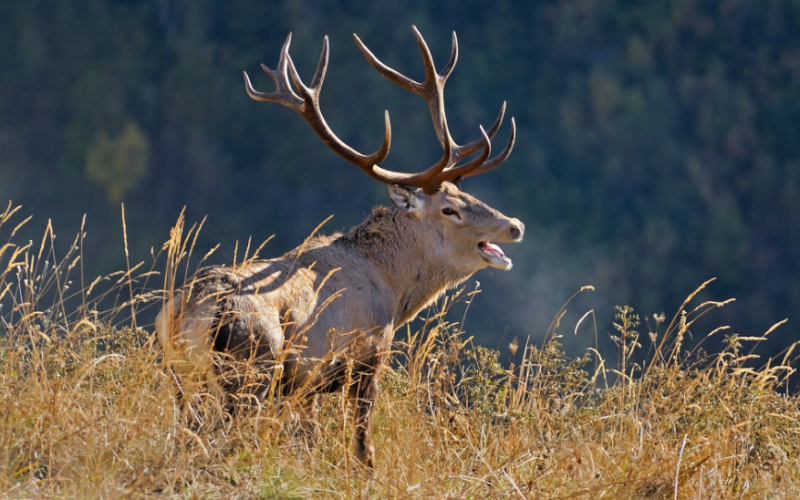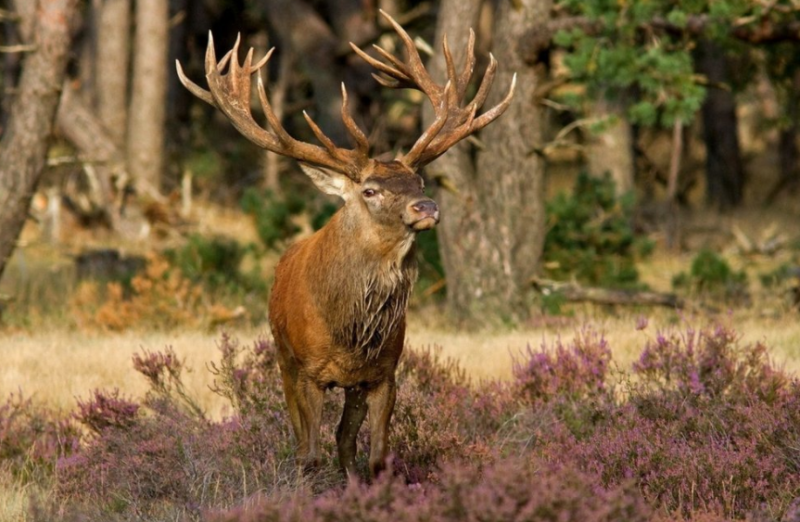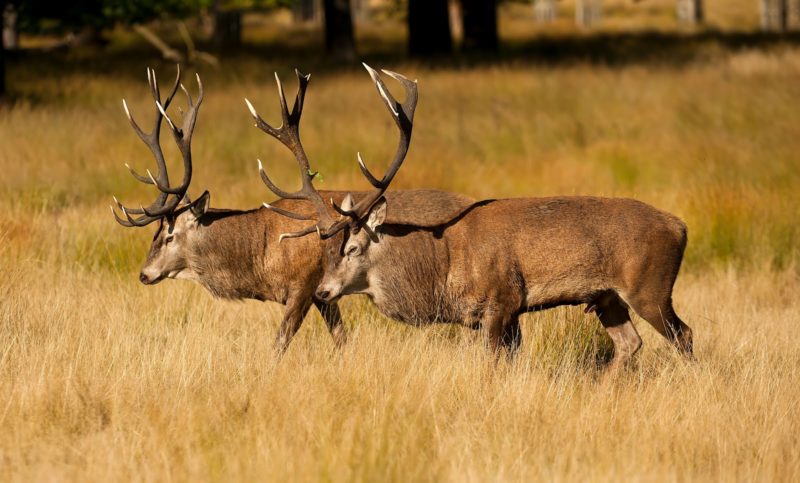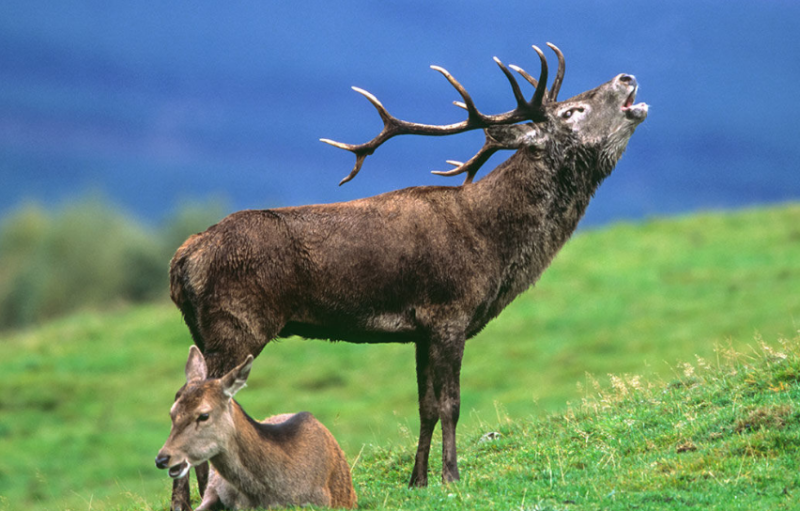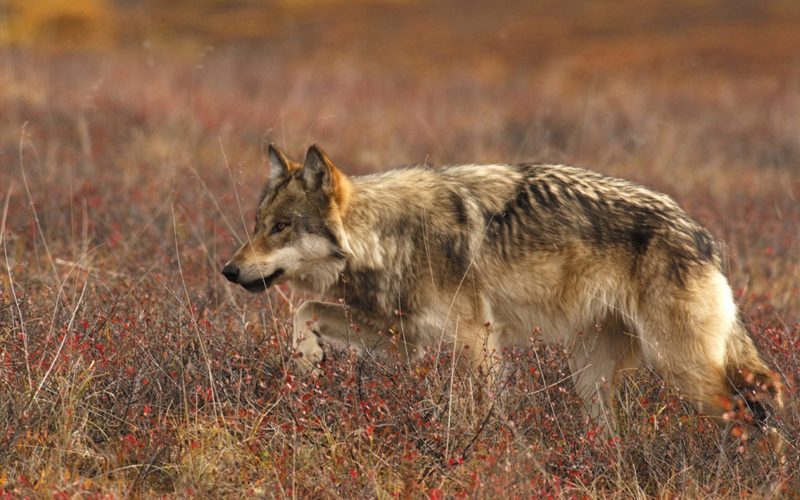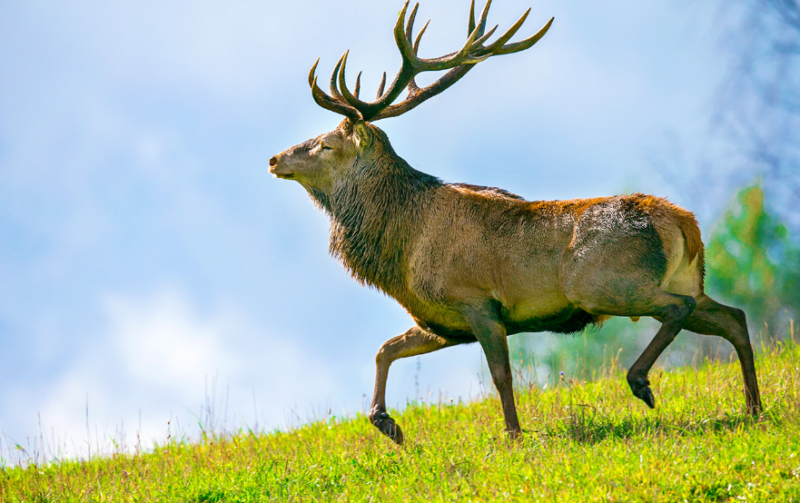A bright and majestic resident of the forest, the red deer has been familiar to people since ancient times. This magnificent animal invariably impresses with its article and beauty. Where does this artiodactyl live and what is its way of life?
Material Content:
Description and features of red deer
The deer, called noble, and also called the real deer, is a large mammal. This horned giant is a member of the deer family.
- The average height at the withers of these creatures varies within a meter and a half.
- Length - from a meter to two.
- Weight can reach 400 kg, but usually is 200 - 350 kg.
It is interesting. Representatives of the deer family are called noble for their slender posture, excellent build, long neck and large head, not to mention impressive growth. His whole appearance speaks of grace, regality and solidity.
The eyes of ungulates have a yellowish-brown tint; deep furrows lie near the organs of vision. A wide forehead is crowned by a noticeable dent. The limbs of some subspecies of the noble horned are subtle and elegant, while in others they are short and massive. However, all members of the family are distinguished by muscular fore and hind legs, as well as spaced hooves connected by membranes.
From the teeth of a red deer it is easy to determine its age. This takes into account the percentage of grinding of fangs and incisors, the slope and intensity of the curvature.
Of course, magnificent branching horns are considered a characteristic attribute of deer.Only males proudly wear them; ladies-deer are deprived of such decoration. Most deer get rid of horns every year, dumping like unnecessary ballast, after which new ones grow very quickly in exchange for old ones.
Species and subspecies of the animal
Red deer - a biological characteristic that combines a number of subspecies, among which are Caucasian deer, European, as well as red deer, red deer and others.
Representatives of subspecies often differ from each other in weight, dimensions, color and a number of other characteristics. So, deer are able to reach over 300 kg in weight and exceed 2.5 m in length. At the same time, the height of their withers will be 130 - 160 cm. The more modest Bukhara deer weighs about a centner, while the length of its body reaches 70 - 90 cm. The shape of the deer horns can also be different - the European one wears a lot of processes on its head, but deer, in turn, they do not have a crown, but each of their horn can individually include 6 - 7 processes.
At the same time, the subspecies of red deer are distinguished by one typical feature - the absence of a summer spotted color characteristic of other artiodactyls.
In addition, the white patch of hair in the area under the tail is quite large and extends well above the base of the tail.
Habitat and lifestyle
Red deer live in the countries of the Americas, Asia, Europe, Australia, Africa, New Zealand. The habitat of artiodactyls also includes Russia.
These creatures are not too whimsical to living conditions and can live both in mountainous areas and on flat surfaces. Deer in the tundra and bog areas are especially appreciated. Many of them prefer areas with high humidity, and therefore live in the immediate vicinity of water bodies.
Red deer are moving and dynamic animals that prefer to roam rather than staying in one specific place all the time. In summer, they live in forest thickets, grazing in the clearing and combining food production with rest in the grass. In winter, deer can be found in impassable wilds and thickets. It is here that you can find food under the thickness of snow.
Race of red deer occurs in September - November.
Features of the behavior of males and females
Red deer are rather shy creatures, and at the same time quite wayward and even aggressive. Young individuals very often turn games and fun, typical of their age, into a real slaughter, somewhat reminiscent of boxing sparring. So, opponents rise on their hind limbs and strive to strike the front with an opponent.
No less brave are females of red deer. Protecting their baby, they can attack even the most ferocious predator without any fear. The legs of the deer mother broke more than one back of the wolves, which after such a meeting remained simply crippled. Males do not stand on ceremony with attackers and simply crush predators with their feet, helping themselves with heavy horns. For this reason, even the most hungry forest thugs lose all desire to raid flocks of red deer.
By the way. At the head of the combined herd of young deer, it is often the noble cloven-hoofed female.
Artiodactyl feeding
The noble deer menu includes plant foods - these creatures are fed by shoots of shrubs, trees, as well as buds or leaves. In the summer, mushrooms, berries, mosses are added to their menu. These horned creatures can also eat seaweed thrown on the coast. Deer can eat branches of deciduous trees.
With the onset of spring, cereals are also included in the diet of red deer. If for a number of reasons hungry times come for horned times, even pine needles can serve as food for them.
Reproduction and longevity
Typically, most mammals mate in spring. Red deer are an exception.Their mating season occurs in the fall and are marked by fierce battles between males, which are usually accompanied by the deafening bass roar of rivals.
After mating, the female carries the baby for 9 months. Usually the offspring appears in May - June. The calf is already fully formed, but the first few days the mother hides him in a shelter, where he remains in a state of complete immobility. The baby does a few movements solely for the purpose of sucking the mother.
Toddlers try to stand on their feet more firmly, although they still cannot follow the female. Two-week-old young deer are already frolic and jumping, and after a while they can completely separate from the herd.
Deer are able to live in the wild for about 20 years. In the walls of zoos, their life expectancy increases slightly, reaching 30 or more years.
Natural enemies
The most sworn enemy of red deer are wolves. The latter do not risk attacking a flock of deer, but attack lonely animals, often young ones. Small deer or weak individuals are also a tasty prey for toothy predators. Often they are attacked by tigers, bears or lynxes.
Human Relationship
But the most terrible and dangerous enemy of all deer (and noble ones are no exception), is, of course, a person. Sensing the appearance of people, horned giants experience real panic and are taken away at the slightest smell of a two-legged soaring in the air. Even loving and selfless females do not risk rushing to defend their fawn, which is in the hands of a person, and simply silently observe the situation.
It is interesting. Despite the unaccountable fear of people, red deer are often tamed by them. The ancient Slavs used deer to transport things and people.
Often, ancient people also bred deer in their homes, warming them with warmth and affection. Some modern peoples in Russia still devote their life to reindeer husbandry. At the same time, horned animals are grown not only for eating, but also for reasons of increasing their population. This approach allows you to maintain the number of red deer in different parts of the world.
Red deer are welcome prey for most hunters. And all because of the impressive young horns of the animal, the so-called antlers. Raw materials are prepared from them, on the basis of which alcohol extracts are prepared for various drugs used in the treatment of neurasthenia or hypotension.
Did you know? There is even a special industry called antler reindeer husbandry. Most often, such a craft flourishes in Altai. Animals are kept in special pens, and antlers are cut only from live deer, without harming them, and even more so without taking their lives. Unfortunately, the same cannot be said for poachers who find the deer antlers welcome.
Hunting for noble artiodactyls inhabiting numerous territories around the world is prohibited in some places, and ungulates themselves are protected by law, as the rarest representatives of the animal world.
Interesting Facts
Those who are interested in a magnificent animal called a red deer will probably be interested to know a few interesting facts about him:
- This animal is listed in the Red Book and is under the protection of many animal welfare organizations.
- The image of a red deer is often used in the creation of heraldic emblems.
- Red deer is one of the fastest animals in the world, capable of reaching speeds of 55 km / h.
- It is very rare to see red deer in the forests of Russia. These mammals hide in dense vegetation during the day. More often these animals are found in reserves and zoos around the world.
The magnificent red deer is a representative of the animal world, striking the imagination with its grace, statism and strength.Relationships with humans in this horned cat are very complicated - on the one hand, people have long tamed deer, sometimes treating them almost like family members. On the other hand, the young horns of artiodactyls are very appreciated by pharmacologists, which makes deer a desirable prey for hunters and poachers.


